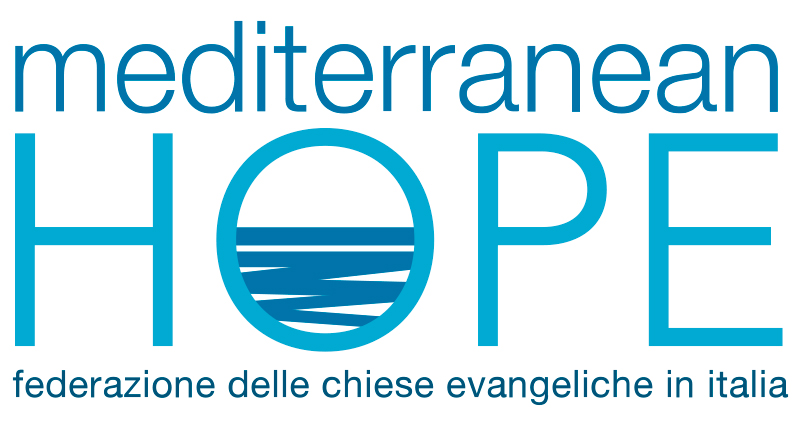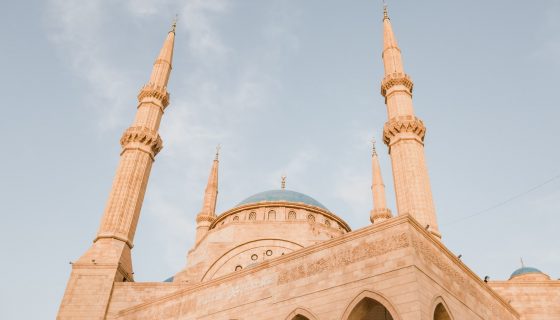- Mediterranean Hope - Federazione delle chiese evangeliche in Italia
- mh@fcei.it
Italy’s humanitarian corridor for migrants provides safe alternative to smugglers’ routes
Megan Williams – CBS
It’s hard not to look at the group of 81 travellers crowded into a waiting room in Terminal 5 of Rome’s Fiumicino airport and imagine alternative fates for them: trapped and hungry in Aleppo, Syria; losing hope in a crammed migrant holding centre in Greece; drowning while trying to cross the Mediterranean Sea.
Since the start of this year — a short span in a crisis that has lasted over a decade — more than 200,000 people escaping conflict and hardship in Africa, the Middle East and South Asia have made it to Europe by boat. Almost 3,000 have died en route, in most cases, drowning after the overcrowded vessels they were travelling in sank.
An unknown number of others die along the migrants’ desert route to Libya. Last week’s gruesome discovery of 34 bodies in Niger was the most recent reminder of that.
But at the Rome airport, the recent group of several dozen mainly Syrian refugees, many with urgent medical problems, arrived safely thanks to a new private sponsorship initiative that functions as a humanitarian corridor — a safe, legal alternative to the dangerous routes smugglers have been using to get to Europe for years.

A teenage boy at the Rome airport, waiting to be taken to one of seven locations throughout Italy where church groups will house them and help them integrate into society. (Megan Williams/CBC)
The program is the result of a collaboration between the Community of Sant’Egidio, a Catholic lay association, and the Federation of Protestant Churches of Italy, with the backing of Italy’s foreign and interior ministries.
A teenage boy at the Rome airport, waiting to be taken to one of seven locations throughout Italy where church groups will house them and help them integrate into society. (Megan Williams/CBC)
Its goal is twofold: stop the most-vulnerable people from embarking on the dangerous sea route to Italy by providing them with a safe alternative, and help them fully integrate into Italian society.
As the United Nations marks World Refugee Day Monday, some who work with refugees say it is the most-promising grassroots refugee initiative to come out of Europe since the migrant crisis began.
‘You don’t have the basics of life’
Among the group of new arrivals is Khaled Abdu, 33, from the city of Homs in western Syria, which he fled three years ago. Sitting beside him in a wheelchair is his five-year-old son, Naser, who can barely keep his eyes open after the long trip.
“He needs medical help for his legs,” said Abdu. “Now, this is a possibility.”
George Teskf, 50, a tall, exhausted-looking lawyer from Aleppo who once studied and worked in Canada, is another new arrival.
For the past few months, he had been trapped in the besieged city with his wife, Wafaa, a civil engineer who suffers from a heart condition and developed a shoulder injury from the strain of having to carry buckets of water several kilometres home.
“In Aleppo, we were just surviving. No work. You only think about bringing water and food. You don’t have the basics of life,” Teskf said.

Syrian couple Hassan Zaheda, right, 31, and Nour Essa, left, 30, and their son Riad, 2, have been staying at the Sant’Egidio community in Rome, Italy. (Max Rossi/Reuters)
Syrian couple Hassan Zaheda, right, 31, and Nour Essa, left, 30, and their son Riad, 2, have been staying at the Sant’Egidio community in Rome, Italy. (Max Rossi/Reuters)
Organizers of the humanitarian corridor helped Teskf and his wife flee. Getting out of Aleppo, he says, was a dangerous 16-hour ordeal that required the careful co-ordination of several different forms of transportation. They made it to Beirut, where they met up with the others in their group and boarded a plane for Rome.
He says if he’d been alone, he might have risked a boat crossing, but his wife’s heath problems meant that was out of the question.
“Now, we just want peace in our country and to live comfortably,” he said.
It’s clearly a sentiment shared by the whole group — the fourth to arrive since the initiative was launched in February and began bringing refugees to Italy on discounted commercial flights from Beirut.
Italian organizers work closely with a local network of humanitarian organizations in Lebanon who help identify particularly vulnerable asylum seekers — those with disabilities and serious health problems, pregnant women and single mothers with young children — and then assist with visas and other support to get them to Italy.

Italian navy personnel approach a rubber dinghy filled with migrants in the Sicily channel in March. The humanitarian corridor is meant to be a safe alternative to dangerous human smuggling routes. (Italian Navy/Associated Press)
Italian navy personnel approach a rubber dinghy filled with migrants in the Sicily channel in March. The humanitarian corridor is meant to be a safe alternative to dangerous human smuggling routes. (Italian Navy/Associated Press)
Once in Italy, the refugees are dispersed throughout the country where different church groups house and support them, arrange schooling for the kids and professional training and assistance for the adults. The groups commit to support the refugees for up to nine months, after which they enter the state-sponsored refugee program if necessary.
While Christian groups spearheaded the program, they make no religious distinctions in selecting refugees. Most of those whom they’ve brought to Italy have been Muslim.
Learning from Canada
So far, only fewer than 300 refugees have arrived in Italy with the help of the safe corridor. But the initiative is the first of its kind in Europe, and organizers insist it’s a promising model that can be exported throughout the continent.
Spain, France and Poland have already expressed interest. And later this month, the Italian ambassador to the UN will host a presentation about the initiative for other EU nations in a bid to bring them on board.

Welcome bags are given out to refugees in the Rome airport after they arrive. (Megan Williams/CBC)
Welcome bags are given out to refugees in the Rome airport after they arrive. (Megan Williams/CBC)
Organizers say Canada’s private sponsorship refugee program has been a valuable model.
“I have just one complaint about the Canadian program,” jokes Paolo Naso, a political science professor and organizer of the corridor, “and that’s that the Canadian refugees arrived before the Italians. But really, Canada has been an inspiration for us.”
- EU policies give wrong message on humanitarian obligations
- Five things to know about Canada’s Syrian refugee program
Still, there are some significant differences that might affect just how much the Italian program can grow. Unlike the Canadian sponsorship program, which has brought in almost 10,000 privately sponsored refugees since November 2015, Italy’s humanitarian corridor has much looser rules and expectations and is essentially run by church groups.
“This program is taking people out of difficult situations and specifically targeting vulnerable groups that may have been overlooked, and it’s doing so without much red tape,” said Federico Soda,the Rome-based director of the International Organization for Migration’s co-ordination office for the Mediterranean.
But replicating the program on a large scale means establishing more formal guidelines governing who can be sponsored, who can be a sponsor and what are their commitments and responsibilities.
“In terms of scaling it up, all these questions need to be answered,” Soda said. “You also need to open it up to non-faith groups or other faiths to replicate. Poland may be interested, but they’ll be interested probably in taking Christians out of Lebanon. So, it’s limited in that sense.”
Still, observers think the humanitarian corridor might offer new hope where it is badly needed and a model for how to safely bring asylum seekers to Europe. With the right backing and proper regulation, it could one day mean far fewer corpses washing up on Mediterranean shores.





